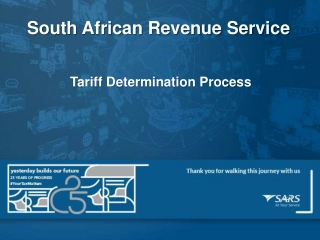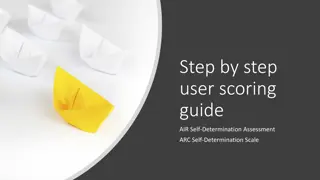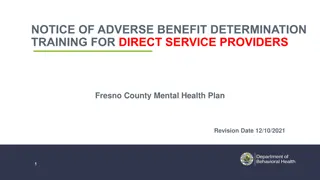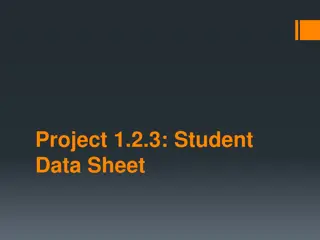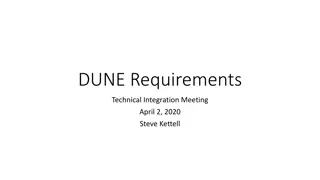Understanding Requirements Determination in Systems Development
The process of requirements determination is crucial in transforming existing systems into proposed ones, with changes easily made in this stage. It involves converting high-level business requirements into detailed ones, including functional and non-functional types, which define the scope of the system. Collaboration between business and IT personnel is essential to identify requirements using techniques like JAD, interviews, and document analysis. Various strategies like root cause analysis and activity-based costing aid in determining requirements effectively.
- Systems Development
- Requirements Determination
- Functional Requirements
- Non-functional Requirements
- Collaboration
Download Presentation

Please find below an Image/Link to download the presentation.
The content on the website is provided AS IS for your information and personal use only. It may not be sold, licensed, or shared on other websites without obtaining consent from the author. Download presentation by click this link. If you encounter any issues during the download, it is possible that the publisher has removed the file from their server.
E N D
Presentation Transcript
Requirements Determination
Introduction The systems development process transforms the existing (as is) system into the proposed (to be) system Requirements determination The single most critical step of the entire SDLC Changes can be made easily in this stage Most (>50%) system failures are due to problems with requirements The iterative process of OOSAD is effective because: Small batches of requirements can be identified and implemented incrementally The system will evolve over time
Requirements Determination Purpose: to convert high level business requirements (from the system request) into detailed requirements that can be used as inputs for creating models What is a requirement? A statement of what the system must do or a characteristic it must have Will later evolve into a technical description of how the system will be implemented Types: Functional: relates to a process or data Non-functional: relates to performance or usability
Requirements Definition Functional & non-functional requirements listed in outline format May be prioritized Provides information needed in subsequent workflows Defines the scope of the system
Determining Requirements Business & IT personnel need to collaborate Strategies for problem analysis: Root cause analysis Duration analysis Activity-based costing Informal benchmarking Outcome analysis Technology analysis Activity elimination
Determining Requirements Requirements are best determined by systems analysts and business people together Techniques for identifying requirements Interviews, questionnaires and/or observation Joint application development (JAD) Document analysis
Creating a Requirements Definition Determine the types of functional and non-functional requirements applicable to the project Use requirements-gathering techniques to collect details Analysts work with users to verify, change and prioritize each requirement Continue this process through analysis workflow, but be careful of scope creep Requirements that meet a need but are not within the current scope can be added to a list of future enhancements
Problems in Requirements Determination Analyst may not have access to the correct users Requirements specifications may be inadequate Some requirements may not be known in the beginning Verifying and validating requirements can be difficult
Requirements Analysis Strategies Problem analysis Ask users to identify problems with the current system Ask users how they would solve these problems Good for improving efficiency or ease-of-use Root cause analysis Focus is on the cause of a problem, not its solution Create a prioritized list of problems Try to determine their causes Once the causes are known, solutions can be developed
Requirements Analysis Strategies(Cont.) Duration analysis Determine the time required to complete each step in a business process Compare this to the total time required for the entire process Large differences suggest problems that might be solved by: Integrating some steps together Performing some steps simultaneously (in parallel) Activity-based costing Same as duration analysis but applied to costs Informal benchmarking Analyzes similar processes in other successful organizations
Requirements Analysis Strategies(Cont.) Outcome analysis What does the customer want in the end? Technology analysis Apply new technologies to business processes & identify benefits Activity elimination Eliminate each activity in a business process in a force-fit exercise
The System Proposal Combines all material created in planning & analysis Included sections: Executive summary Provides all critical information is summary form Helps busy executives determine which sections they need to read in more detail The system request The workplan The feasibility analysis The requirements definition Current models of the system (expected to evolve)



